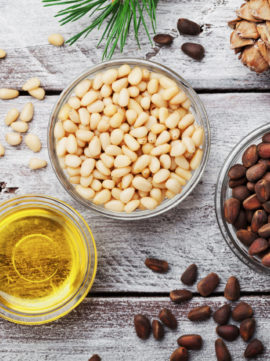PINE NUTS

PINE NUTS
- Pine Nuts are edible seeds derived from pine trees.
- They are widely consumed not only because of exceptionally pleasant taste, but due to their medicinal and nutritional value.
- Consumption of Pine Nuts leads to lower cholesterol levels, better blood circulation, and reduced hepatic fats.
- Pine Nuts can be consumed in raw form or can be ingredients of desserts, cookies, bread, pesto sauce, etc.

PRODUCTION
- Russia is one of the biggest producer of Pine Nuts in the world.
- Most of the Pine Nuts in Russia are collected from the Siberian pine, named Pinus Sibirica (Siberian Pine Nuts).
- The Siberian Pine Nuts production plants are mainly located in Western and Eastern Siberia, Central Altai region.

EXPORT
- Russia exports around 10 thousand tons of Pine Nuts per year
- Most of the export goes to China and Germany
- Chinese producers usually buy Pine Nuts from Russia, Mongolia, North Korea, Pakistan, process and then re-export to Europe
- Therefore, Russian producers started to reorient their export to the European market.

DIRECT EXPORT TO EUROPE
- Europe is the biggest consumer of Pine Nuts in the world importing around 30 thousand tons of pine nuts per year.
- China is the main supplier of Pine Nuts to Europe covering around 30% of the European market.
- Russian direct export to Europe covers only 5% of the their needs and has a huge potential to grow.
- Over the last 5 years European Pine Nuts Import has been increasing on average by 10% annually.

RUSSIAN VS CHINESE PINE NUTS
- Chinese refiners often use chemicals in the refining process to extract more pine nuts oil which significantly affects the taste and quality of the nuts.
- Chinese suppliers often export the clones of “Siberian Pine Nuts” mixing them with Chinese Armand Pine (some times up to 43%), which visually look similar to Siberian Nuts, but taste much differently (with metallic after-taste).